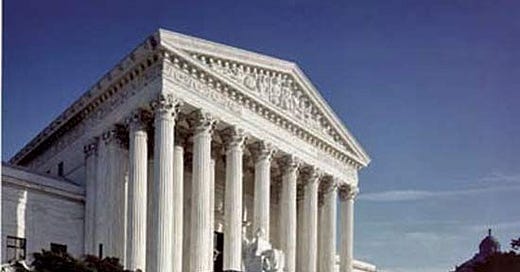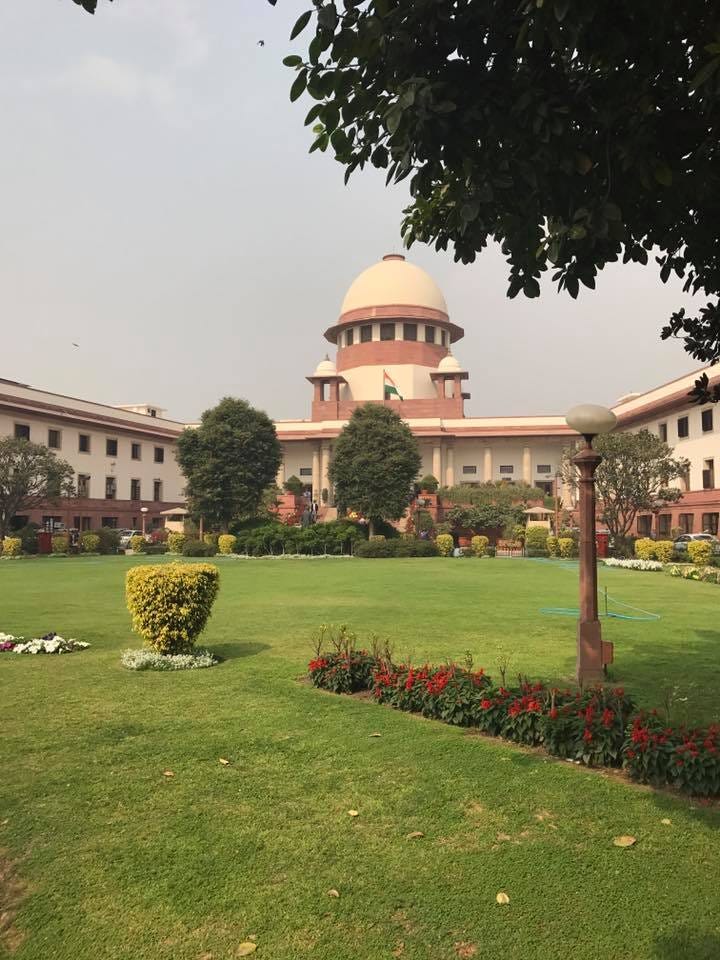$6 Billion Purdue Pharma Opioid Drug Settlement— US Supreme Court Seems Split
The case, which involves loss of thousands of lives and implicates the billionaire Sackler family, has the potential to redefine accountability and bankruptcy laws in the USA, and class action suits.
US Supreme Court Appears Torn During Crucial Hearing
As the U.S. Supreme Court Justices convened on December 4 to hear and deliberate the high-stakes case of Purdue Pharma's bankruptcy settlement, the nation watched intently. This case, fraught with immense ramifications, saw the Justices grappling with intricate questions of law: whether to endorse the $6 billion deal that would unequivocally shield the Sackler family, proprietors of OxyContin manufacturer Purdue Pharma, from additional civil lawsuits and criminal prosecution related to their role in the opioid epidemic. This epidemic is believed to have claimed thousands of lives over nearly a decade and a half. Compounding this dilemma is the concern that rejecting the settlement could detrimentally impact the victims of the crisis, most of whom overwhelmingly support the proposed settlement.
The Supreme Court's engagement, following an appeal by President Joe Biden's Administration against a lower court's ruling favoring the settlement, has set the stage for a landmark judgment expected by June 2024. The day's proceedings revealed a divided bench, with some Justices, like conservative Brett Kavanaugh, questioning the need to deem such settlements categorically inappropriate after decades of judicial precedent. In contrast, liberal justices like Elena Kagan expressed reservations about the unprecedented legal protections being extended to the Sackler family, noting the unusually advantageous terms compared to typical bankruptcy discharges. As the legal community, pharma industry, academia and the nation await a definitive ruling, the voices of about 50 protestors outside the Court, including families of opioid victims, echoed the deep-seated emotions and stakes involved in this historic legal battle.
A $6 Billion Settlement at the Heart of the Matter Before SCOTUS
A $6 billion settlement agreement between Purdue Pharma LP and the Sackler Family, which raises crucial legal and constitutional questions, is today's (December 4) focal point as the United States Supreme Court begins its hearings in the landmark case of Harrington v. Purdue Pharma, 23-124. This case transcends the mere adjudication of the settlement's validity; it holds the potential to bring about significant changes in the U.S. legal framework, especially in the way class action suits involving numerous plaintiffs are handled under bankruptcy laws. As the nation's highest court grapples with the intricacies of this contentious settlement, the outcome could substantially alter the legal contours of corporate accountability in America.
It's important to note that, in contrast to India, where the Supreme Court typically hears cases through 2 or 3-Judge benches in routine matters, the US Supreme Court primarily addresses questions of national and constitutional importance. These cases are heard by the full bench, comprising nine lifetime-appointed judges, who sit together to deliberate.
The Opioid Crisis: A Backdrop to the Legal Battle
The gravity of this case is further accentuated by its roots in the devastating opioid crisis that has plagued the United States for decades. The aggressive marketing of opioids, particularly Purdue Pharma's OxyContin, has been linked to the tragic loss of thousands of lives and the addiction of hundreds of thousands more, over a period of many decades since its launch in 1996. This crisis, born from a seemingly innocuous painkiller, has had far-reaching social and health implications. The outcome of this case not only carries significant consequences for those directly involved but also stands to set a transformative precedent in the realms of corporate bankruptcy and mass tort settlements in America.
The Genesis of the Purdue Pharma Case
This legal saga finds its origins in Purdue Pharma's involvement in the opioid epidemic, a crisis that has grievously affected numerous individuals across the United States. At the heart of this controversy is the Sackler family, the owners of Purdue Pharma, who have faced allegations related to profiting from the crisis. These allegations are closely tied to their unethical and indiscriminate promotion of OxyContin, a prescription drug that rapidly dominated the market. The billionaire Sackler family's deep involvement has turned into a major point of scrutiny, leading to probing questions about corporate responsibility and ethical practices in the pharmaceutical sector. It also casts a spotlight on the roles of promoters and partners, including those not directly engaged in the daily operations of the company, further intensifying the debate over accountability and oversight in such situations.
Navigating Through Legal Hurdles to Settlement
The path to Purdue Pharma's bankruptcy settlement was laden with significant legal challenges. The company had earlier filed guilty pleas relating to misbranding and fraud charges related to the aggressive marketing of OxyContin during the period in 2007 to 2020. These charges were pivotal in shaping the bankruptcy proceedings that began in 2019. In 2021, a critical development occurred as Purdue Pharma reached a preliminary bankruptcy settlement with its creditors. This settlement, while incorporating the outcomes of the earlier guilty pleas, crucially did not result in any individual convictions. Further, in March 2022, this settlement was revised to enhance the Sackler family's financial contribution, ultimately culminating in their agreement to provide up to $6 billion to a trust. This trust was established to settle the myriad claims from states, hospitals, and individuals affected by the opioid crisis.
Controversies and Consequences of the Settlement
The finalized settlement with Purdue Pharma has sparked a multifaceted controversy. While transforming the company into a nonprofit organization dedicated to combating the opioid epidemic, the settlement also granted legal immunity to the Sackler family, preventing any future lawsuits against them. This aspect of the settlement, particularly the establishment of a $6 billion trust funded by the Sacklers, has been a point of major contention. Critics, including the Department of Justice, argue that this grants undue protection to the family, especially considering Purdue Pharma's previous admissions of guilt. As a result, the settlement has reignited debates over corporate accountability, the adequacy of financial reparations, and the justice system's ability to hold individuals responsible in cases of corporate malfeasance.
Challenges and Supporters
While a majority of the plaintiffs have shown support for the settlement, it faces stern opposition from notable entities, including the Department of Justice. Opponents argue that the settlement unjustly grants immunity to the Sackler family, shielding them from future lawsuits. This aspect has become a major point of contention.
Legal Issues before the US Supreme Court
Central to the Supreme Court’s deliberation is the legality of the non-consensual third-party releases, a mechanism that would shield the Sacklers from future opioid lawsuits. This hearing marks the first time the apex court is examining such a mechanism, very commonly used in corporate bankruptcy proceedings, potentially setting a significant legal precedent.
Implications of Overturning the Settlement
Should the Supreme Court decide to set aside the settlement, the repercussions would extend far beyond this case. It would cast doubt on the legality of similar agreements in past and future corporate bankruptcies, affecting how companies and individuals can seek resolution in mass tort cases. The SCOTUS may choose to exercise the doctrine of “prospective overruling” and not reopen the old cases, even as it strikes down the Purdue settlement(s).
Pros and Cons of the Settlement
Advocates of the settlement emphasize its immediate benefits, including significant financial aid for opioid crisis mitigation and victim compensation. Critics, however, raise concerns about corporate accountability and the erosion of legal rights, particularly the right to a jury trial.
Moment of Truth for the Sackler Immunity Deal
This hearing represents a critical moment for the Sackler family and the broader corporate world. The Supreme Court's decision could either uphold a commonly used legal strategy in bankruptcy settlements or dismantle it, thereby altering the future course of corporate restructuring and mass litigation resolution.
India Context— Bhopal Gas Tragedy
In this context, it's imperative to draw a parallel with the Indian legal system, which has historically shown a tendency towards milder criminal and tortious civil liability in cases of gross corporate negligence. A glaring example is the 1984 Bhopal Gas Disaster, one of the world's worst industrial tragedies, where thousands of lives were lost and lakhs of people affected. The aftermath revealed stark deficiencies in India's legal framework, as the victims and their families struggled for decades to receive adequate compensation.
However, there has been a recent shift in the Indian judiciary's stance on corporate accountability. A landmark judgment by the Supreme Court of India has recently decided that promoters or shareholders who personally guarantee corporate loans cannot evade their liabilities under the Insolvency and Bankruptcy Code (IBC) and the National Company Law Tribunal (NCLT) mechanism. This development, predominantly on the civil side of debt settlement between lenders and borrowers, offers a ray of hope. However, in cases of tragedies involving substantial loss of life, the Indian legal system continues to struggle with ambiguities and inefficiencies. The Bhopal disaster remains a stark reminder of these persistent challenges. While the government may provide compensation for deaths resulting from recent railway accidents or bridge collapses, assigning liability to the responsible entities often remains unresolved. Despite the filing of initial FIRs (First Information Reports), criminal trials in such cases seldom reach a swift and decisive conclusion.
Conclusion
As the US Supreme Court deliberates this complex and multifaceted case, the outcome remains poised to influence not just the parties involved but also the future of corporate bankruptcy and mass tort litigation in the United States. It is a decision that will be closely watched by legal experts, corporations, victims of the opioid crisis, and the public at large, as it holds the potential to redefine the boundaries of corporate liability and accountability, and even culpability. The repercussions of this decision will not be limited to corporate America; they are likely to influence future policies and legal frameworks in other countries, including the European Union and India.








